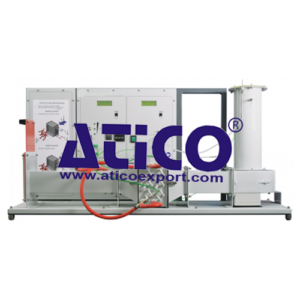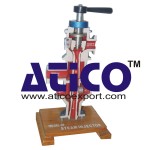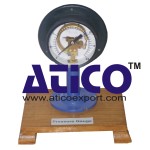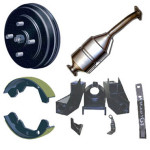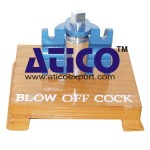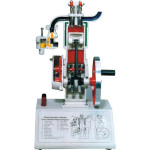Description
Many thermodynamic applications use water to air heat exchangers. Examples include using circulated water to heat or cool air in a HVAC installation, or to cool hot water using a flow of air, as in the radiator of a combustion engine. The Water to Air Heat Exchanger mirrors air heating and water cooling applications. It fits on a bench top and includes a hot water supply, a cooling air duct and all instruments needed for tests on cross-flow heat exchangers. The heat output of the design produces good results without greatly affecting the temperature of a reasonable size classroom or laboratory. Its hot water system includes a tank with a PID controlled electric heater for stable temperatures, a pump and tank level indicators. An electrically operated valve opens to let water in to fill the tank. The tank has protection in case of over temperature, low water level and overfilling. A precision needle valve and fl ow meter control and measure the water fl ow rate. The cooling air passes down a vertical duct containing an orifice plate which connects to a differential pressure transducer. The air then passes through a fixed speed centrifugal fan and along a horizontal duct containing the heat exchanger. The air exits the duct through a hand operated slide-valve. Students use the orifice and valve to measure and control the air flow. Thermocouples at the water connectors and in the air duct measure hot and cold inlet and outlet fluid stream temperatures. Clear, multiline digital displays show the temperatures, water flow rate and orifice pressure (to calculate air flow). For safety and simplicity, the heat exchangers have self-sealing quick connectors for their water supply. Quick release clamps and locating dowels hold the heat exchanger in the air duct. Students need no tools to fi t and change the heat exchangers. Each heat exchanger includes a mimic diagram that attaches to a space on the main unit panel. The diagram gives useful information to the student, including how to connect the heat exchanger. All the heat exchangers have been tested to 20 bar to ensure there is no risk of leaks. The equipment includes one heat exchanger as standard. It has 32 tubes in two banks of 16, allowing the addition of a thermocouple at the mid point. we supply two diff erent heat exchangers as optional extras. One has a single bank of 16 tubes, giving half the heat transfer area of the standard heat exchanger. The other includes fi ns to increase the heat transfer area to equal that of the standard 32 tube heat exchanger.
Learning outcomes
- Heat transfer between fluids through a solid wall
- Energy balance and efficiency
- Finding the heat transfer coefficient and Log Mean Temperature Difference (LMTD)
- Effect of water temperature (the ‘driving force’)
- Comparing actual midpoint water temperature with the average based on overall inlet and outlet temperatures
- Comparing temperature change between upstream and downstream tube banks
- Comparison of heat exchangers of different construction and heat transfer area
Specifications
ATICO is committed to a programme of continuous improvement; hence we reserve the right to alter the design and product specification without prior notice.
Standard heat exchanger: 32 off 10 mm diameter tubes in four rows, cross-fl ow, approximate surface area of 0.16 m2
16 Tube Heat Exchanger: 16 off 10 mm diameter tubes in two rows, cross-fl ow approximate surface area of 0.08 m2
Finned Heat Exchanger: Tubes in two rows, cross-flow with vertical fi ns, approximate surface area of 0.16 m2
Nett dimensions:
•AET340 (with standard heat exchanger fitted) 1250 mm wide x 810 mm front to back x 620 mm high
and 80 kg
• AET340a: 130 mm wide x 280 mm front to back x 210 mm high and 3 kg
• AET340b: 130 mm wide x 280 mm front to back x 210 mm high and 3 kg
Approximate packed dimensions:
• AET340: 0.9 m3 and 100 kg
• AET340a: 0.013 m3 and 5 kg
• AET340b: 0.013 m3 and 5 kg
Operating Conditions
Operating environment:
Laboratory
Storage temprature range :
–25°C to +55°C (when packed for transport)
Operating temprature range :
+5°C to +40°C
Operating relative humidity range :
80% at temperatures < 31°C decreasing linearly to 50% at 40°C

